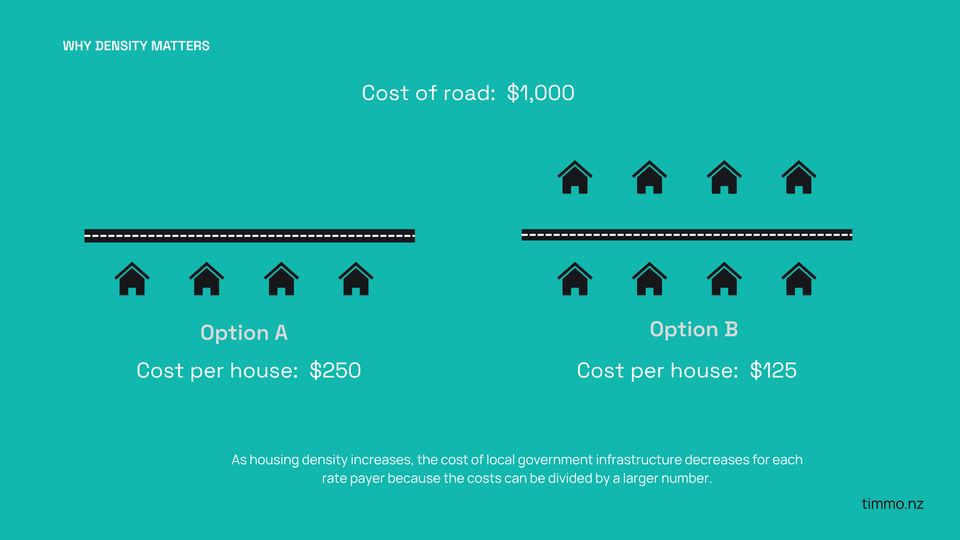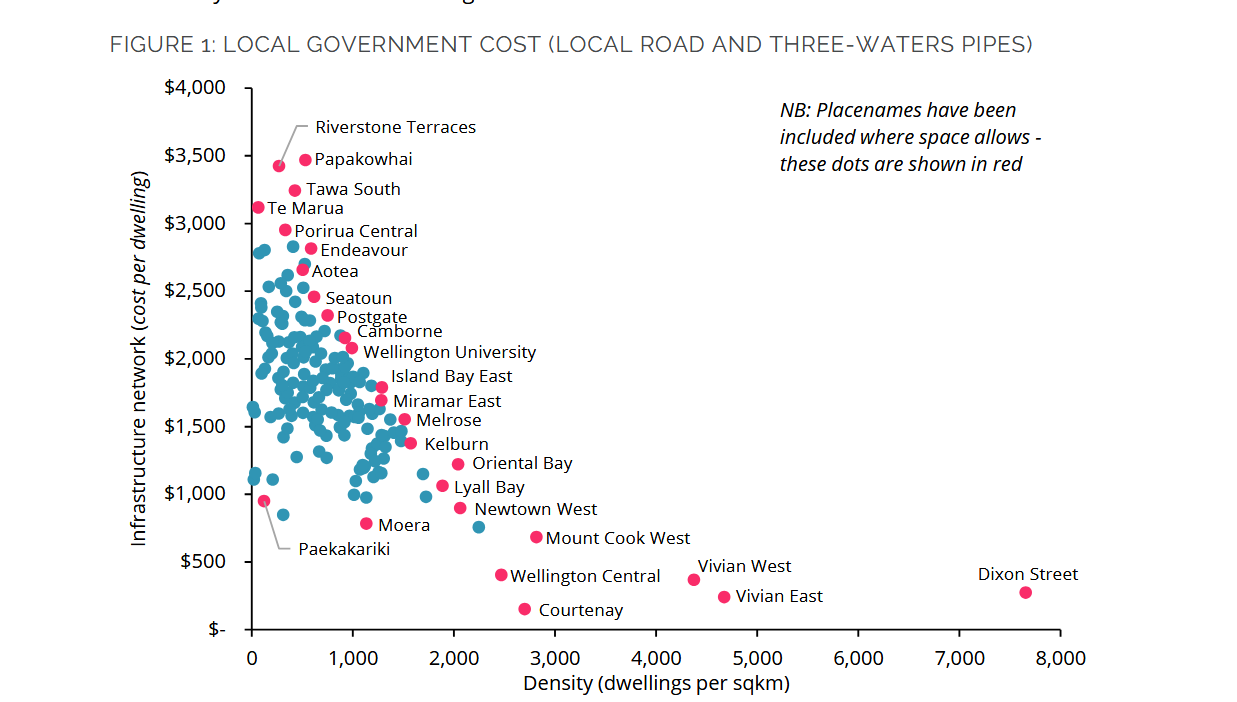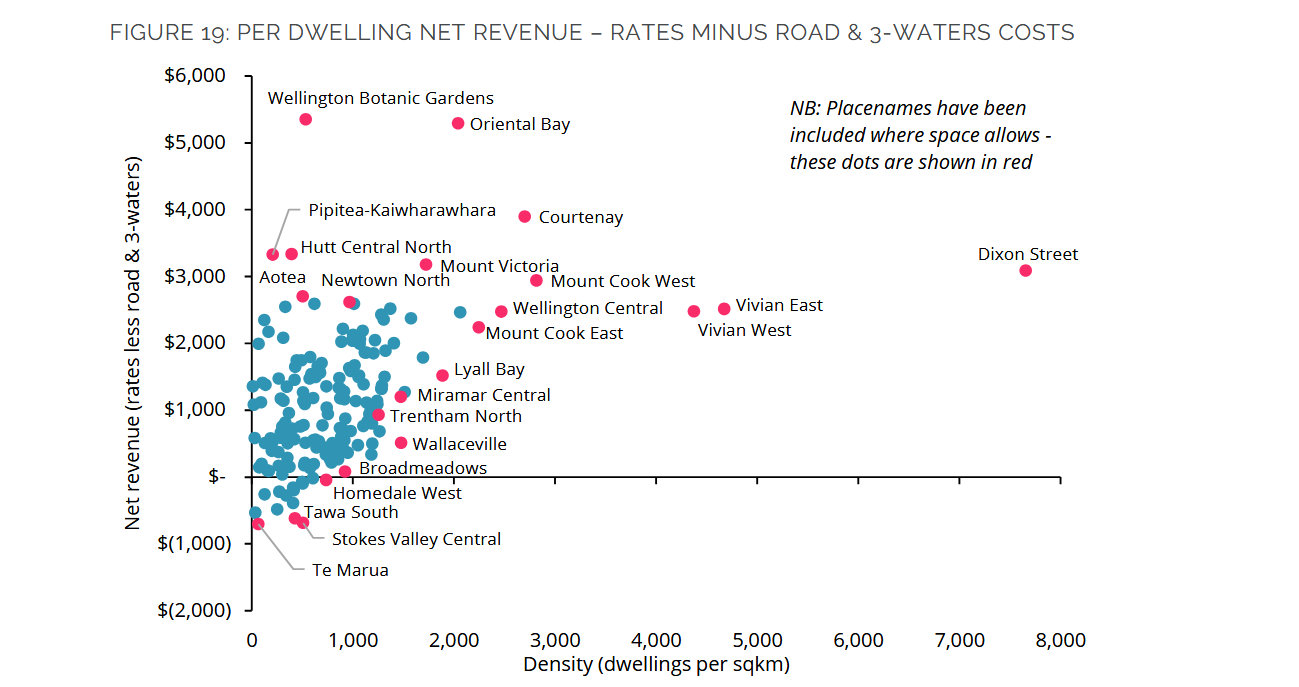Why density matters

Residential suburbs can be very expensive for city governments. Compared to denser inner-city areas, they need to divide infrastructure costs by fewer rate payers.
Check out these two plots that were published in a 2024 report entitled Infrastructure costs and urban form by Sense Partners.
Some suburbs cost 6x more than others...
The first plot shows the financial cost for local government per dwelling in each suburb in the Wellington region.
Wellington's inner-city suburbs cost below $500/annum to service. Dwellings in Riverstone Terraces in the western hills of Upper Hutt costs about $3,500/annum for their council.

Lower Hutt's suburbs are mostly mostly represented in the blue mass of about areas below 1,500 dwellings/km². The costs to provide infrastructure–primarily roads and pipes–to those areas is about $1,000-2,000 each year.
...and some even lose money
Some suburbs don't actually pay for their own infrastructure. Take a look at figure 19 that's in page 29 of the report:

We can build a brighter city
When I hear people complain about the cost of rates, it's often followed up with politicians talking about where to cut costs. The proposals typically focus on topics that are pretty minor in the grand scheme of things – there's lots of focus on the one's column in the budget and far less on the hundreds column.
If we're really serious about creating a financially sustainable city, then our suburbs, and especially our central suburbs, need to grow.
